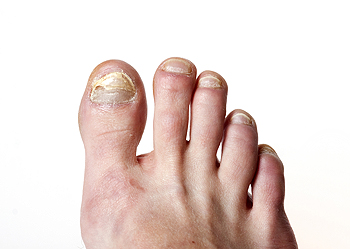June 2021
 Whether you run for fun or are training for a marathon, you should always take measures to avoid common running injuries such as plantar fasciitis and Achilles tendinitis. Make sure that after you run, you take time to allow your body to rest and recover. Taking a day off from running to rest may help you avoid overuse injuries. Using foam rollers, massaging your muscles, and gently stretching your legs and feet after a run is suggested. Sleeping well and eating a healthy diet, wearing the right shoes, and increasing your training gradually over time are also beneficial. To learn more about how to prevent running injuries, please consult with a podiatrist.
Whether you run for fun or are training for a marathon, you should always take measures to avoid common running injuries such as plantar fasciitis and Achilles tendinitis. Make sure that after you run, you take time to allow your body to rest and recover. Taking a day off from running to rest may help you avoid overuse injuries. Using foam rollers, massaging your muscles, and gently stretching your legs and feet after a run is suggested. Sleeping well and eating a healthy diet, wearing the right shoes, and increasing your training gradually over time are also beneficial. To learn more about how to prevent running injuries, please consult with a podiatrist.
Exercising your feet regularly with the proper foot wear is a great way to prevent injuries. If you have any concerns about your feet, contact one of the chiropodists of The Footcare Centre. Our chiropodists will treat your foot and ankle needs.
How to Prevent Running Injuries
Many common running injuries are caused by overuse and overtraining. When the back of the kneecap starts wearing out and starts causing pain in your knee, this is commonly referred to as runner’s knee. Runner’s knee is a decrease in strength in your quadriceps and can occur if you’re not wearing properly fitted or supporting shoes. To prevent runner’s knee, focusing on hip strengthening is a good idea, as well as strengthening your quads to keep the kneecaps aligned.
What Are Some Causes of Running Injuries?
- One cause of a common running injury is called iliotibial band syndrome.
- Plantar fasciitis is also another common injury.
- Stress fractures can occur from overtraining, lack of calcium, or even your running style.
Best Ways to Prevent Running Injuries
- Wear footwear that fits properly and suits your running needs.
- Running shoes are the only protective gear that runners have to safeguard them from injury.
- Make a training schedule. Adding strengthening exercises as well as regular stretching can help keep you strong and limber and can lessen the possibility of injuries.
- Stretching keeps muscles limber; this will help you gain better flexibility.
If you have any questions please feel free to contact our office located in Niagara Falls, ON . We offer the newest diagnostic and treatment technologies for all your foot and ankle needs.
 Toenail fungus, or onychomycosis, is a fungal infection of the nail. This type of infection can be unsightly and uncomfortable, causing thickened, brittle, crumbly, and discolored toenails. Over time, the nails may begin to separate from the nail bed, leading to pain or discomfort while wearing shoes. Fungal nail infections can be highly contagious, so it is important to take measures to prevent infection. Maintain good foot hygiene by washing your feet daily and drying them thoroughly. Wear socks and shoes made with breathable, moisture-wicking materials. When using public facilities like swimming pools and locker rooms, where fungi tend to thrive, wear shoes to prevent exposure. You should also avoid sharing personal items, like towels or nail clippers, with other people. To learn more about preventing fungal nail infections, please consult with a podiatrist.
Toenail fungus, or onychomycosis, is a fungal infection of the nail. This type of infection can be unsightly and uncomfortable, causing thickened, brittle, crumbly, and discolored toenails. Over time, the nails may begin to separate from the nail bed, leading to pain or discomfort while wearing shoes. Fungal nail infections can be highly contagious, so it is important to take measures to prevent infection. Maintain good foot hygiene by washing your feet daily and drying them thoroughly. Wear socks and shoes made with breathable, moisture-wicking materials. When using public facilities like swimming pools and locker rooms, where fungi tend to thrive, wear shoes to prevent exposure. You should also avoid sharing personal items, like towels or nail clippers, with other people. To learn more about preventing fungal nail infections, please consult with a podiatrist.
For more information about treatment, contact one of the chiropodists of The Footcare Centre. Our chiropodists can provide the care you need to keep you pain-free and on your feet.
Toenail Fungus Treatment
Toenail fungus is a condition that affects many people and can be especially hard to get rid of. Fortunately, there are several methods to go about treating and avoiding it.
Antifungals & Deterrence
Oral antifungal medicine has been shown to be effective in many cases. It is important to consult with a podiatrist to determine the proper regiment for you, or potentially explore other options.
Applying foot powder on the feet and shoes helps keep the feet free of moisture and sweat.
Sandals or open toed shoes – Wearing these will allow air movement and help keep feet dry. They also expose your feet to light, which fungus cannot tolerate. Socks with moisture wicking material also help as well.
If you have any questions please feel free to contact our office located in Niagara Falls, ON . We offer the newest diagnostic tools and technology to treat your foot and ankle needs.
 Hammertoe is a progressive foot deformity in which the toe bends down at the middle joint, giving the toe a hammer-like appearance. This can be both unsightly and uncomfortable as the tops of your toes rub up against the inside of your shoes. The constant rubbing and friction can cause corns and calluses to form on the tops of the toes. Hammertoes can be caused by an imbalance of the muscles and ligaments in the toes, wearing shoes that don’t fit properly, toes that squish together, shoes that have excessively high heels or a narrow toe box, and even flip-flops. Flat feet may also be a risk factor that contributes to hammertoe formation. If you develop hammertoe, please consult with a podiatrist who can offer you treatment options to slow the progression of your hammertoes as well as correct them.
Hammertoe is a progressive foot deformity in which the toe bends down at the middle joint, giving the toe a hammer-like appearance. This can be both unsightly and uncomfortable as the tops of your toes rub up against the inside of your shoes. The constant rubbing and friction can cause corns and calluses to form on the tops of the toes. Hammertoes can be caused by an imbalance of the muscles and ligaments in the toes, wearing shoes that don’t fit properly, toes that squish together, shoes that have excessively high heels or a narrow toe box, and even flip-flops. Flat feet may also be a risk factor that contributes to hammertoe formation. If you develop hammertoe, please consult with a podiatrist who can offer you treatment options to slow the progression of your hammertoes as well as correct them.
Hammertoes can be a painful condition to live with. For more information, contact one of the chiropodists of The Footcare Centre. Our chiropodists will answer any of your foot- and ankle-related questions.
Hammertoe
Hammertoe is a foot deformity that occurs due to an imbalance in the muscles, tendons, or ligaments that normally hold the toe straight. It can be caused by the type of shoes you wear, your foot structure, trauma, and certain disease processes.
Symptoms
- Painful and/or difficult toe movement
- Swelling
- Joint stiffness
- Calluses/Corns
- Physical deformity
Risk Factors
- Age – The risk of hammertoe increases with age
- Sex – Women are more likely to have hammertoe compared to men
- Toe Length – You are more likely to develop hammertoe if your second toe is longer than your big toe
- Certain Diseases – Arthritis and diabetes may make you more likely to develop hammertoe
Treatment
If you have hammertoe, you should change into a more comfortable shoe that provides enough room for your toes. Exercises such as picking up marbles may strengthen and stretch your toe muscles. Nevertheless, it is important to seek assistance from a podiatrist in order to determine the severity of your hammertoe and see which treatment option will work best for you.
If you have any questions, please feel free to contact our office located in Niagara Falls, ON . We offer the newest diagnostic and treatment technologies for all your foot care needs.
Blog Archives
- 2025
- 2024
- 2023
- 2022
- 2021
- 2020


